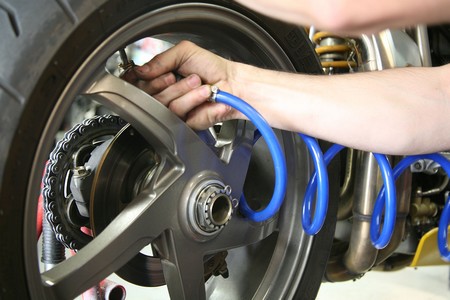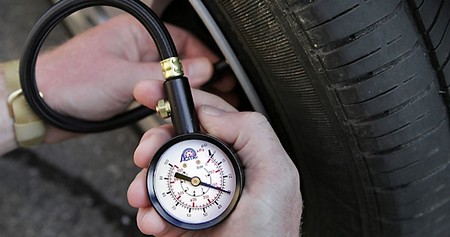If you drive very often, you should consider it a matter of personal and environmental responsibility to know how to inflate tires. Making sure your tires are inflated properly is a duty that only has to be carried out each month. In doing so, you reduce the accident risk posed by underinflated tires, as well as reduce tire wear. You won’t have to replace your tires as often as you used to, thereby saving yourself a hefty sum. As if that wasn’t enough, a properly inflated set of tires guarantees better gas mileage!
If you don’t know how to inflate tires, now is always the best time to learn. You only have to ask once at a garage or gas station before you get the hang of the process. Of course, you could always use your own portable air compressor obtained from an auto parts store, but the procedure remains the same. You should be able to determine the information on the air pressure specification for the tires on your car from a sticker that is usually located in the trunk, glove box or the driver’s side doorjamb. The specifications on the tires’ sidewall list the maximum pressure for a tire.
Working on one tire at a time, remove the plastic stem cap and keep it secure. Before inflating the tire, fist check the air pressure inside it with a tire pressure gauge. This is available at most gas stations, but it’s also convenient if you have one of your own. The gauge should be pressed and held firmly against the valve to get a reading. The sound of hissing air indicates that air is being released from the tires.
Remove the tire pressure gauge and replace it with the air pump hose to inflate the tire. The air pump hose should be pressed on the valve as you squeeze on the lever at the other end. It may take some effort to hold the hose in place when the air rushes through it and into the tire.
Once the tire inflation is complete, check that you have achieved the correct tire pressure with your gauge. A slightly overinflated tire is acceptable, and some guides recommend tire pressure up to 3 psi (pound per square inch) over the specifications if the tires have been warmed up.
If you have accidentally overinflated the tire, let the air out by pressing a pen or fingernail in the center of the valve. The majority of tire pressure gauges manufactured also have a small knob for use on such an occasion. Repeat the process for the other three tires, and don’t forget to check the spare either!










